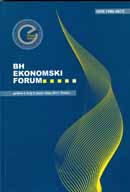Primjena modela podatkovne kocke u funkciji poboljšanja prognoze uvoza i izvoza
The Application of the Data Cube Model in the Function of Improving the Import/Export Forecasting
Author(s): Damir RavlićSubject(s): Economy
Published by: Ekonomski fakultet - Univerzitet u Zenici
Keywords: Data cube; OLAP; business intelligence; DSS; import/export forecasting
Summary/Abstract: One of the management problems is the lack of quality data, which does not mean that they do not exist. On the contrary, we are usually swamped with unnecessary data. The problem is how to separate the one essential for decision making from such a mass of data. Data are a part of a company’s assets and, along with capital and human resources, it is an important part of an overall competitiveness. Various software tools for decision making support system building enable analyses, particularly those for forecasting leading economic indicators. This paper presents the application of modern methods for transforming data into business intelligence. The business intelligence is a process lacking in a large number of organizations which seek to obtain information from available data. Such primary data on transactions are a clear indicator of the situation, a clear indication of what is happening in the organization. They do not give a clear answer as to why something happens, do not diagnose processes and changes, interpret results, classify information, determine clusters, modelling dependencies among data, reveal no changes or deviations in relation to the set goals, do not determine a correlation between the data, generate association rules or a correlation between records in a database. We cannot provide direct answers to the above questions with transaction data. Data warehousing, online analytical processing and knowledge discovery in databases and warehouses are the most significant and important new technology in the field of commercial data processing. An integration of IT tools (OLAP, data mining) and appropriate quantitative and qualitative decision models results in new types of information systems for decision support (from executive information systems, strategic information systems to intelligent decision support systems). This paper researches how data cube models and decision-making models “cooperate” in the case of import/export forecasting.
Journal: BH ekonomski forum
- Issue Year: 2012
- Issue No: 3
- Page Range: 59-76
- Page Count: 18
- Language: Bosnian

